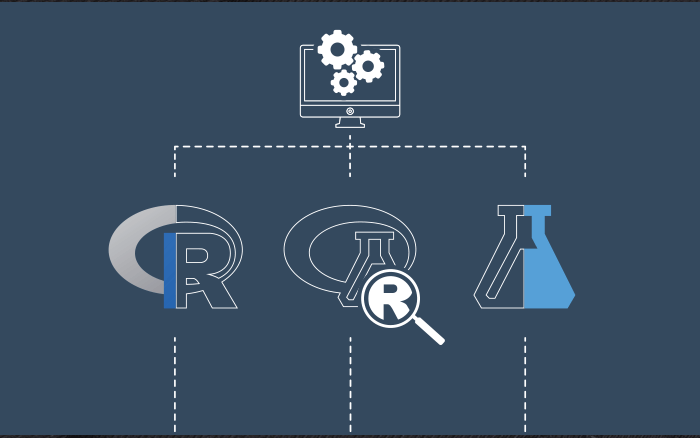
(R Example for Citizen Data Scientist & Business Analyst)
R Program to Find L.C.M.
In this example, you will learn to find the L.C.M of two numbers entered by the user by creating a user-defined function.
The least common multiple (L.C.M.) of two numbers is the smallest positive integer that is perfectly divisible by the two given numbers. For example, the L.C.M. of 12 and 14 is 84.
Example: Compute LCM in R
# Program to find the L.C.M. of two input number
lcm <- function(x, y) {
# choose the greater number
if(x > y) {
greater = x
} else {
greater = y
}
while(TRUE) {
if((greater %% x == 0) && (greater %% y == 0)) {
lcm = greater
break
}
greater = greater + 1
}
return(lcm)
}
# take input from the user
num1 = as.integer(readline(prompt = "Enter first number: "))
num2 = as.integer(readline(prompt = "Enter second number: "))
print(paste("The L.C.M. of", num1,"and", num2,"is", lcm(num1, num2)))
Output
Enter first number: 24 Enter second number: 25 [1] "The L.C.M. of 24 and 25 is 600"
This program asks for two integers and passes them to a function which returns the L.C.M.
In the function, we first determine the greater of the two number since the L.C.M. can only be greater than or equal to the largest number.
while loop to go from that number and beyond.In each iteration, we check if both the input numbers perfectly divides our number. If so, we store the number as L.C.M. and break from the loop. Otherwise, the number is incremented by 1 and the loop continues.
The above program is slower to run. We can make it more efficient by using the fact that the product of two numbers is equal to the product of least common multiple and greatest common divisor of those two numbers.
Number1 * Number2 = L.C.M. * G.C.D.
Python Examples for Beginners: Python Code to Find the Largest Among Three Numbers
R Examples for Beginners – R Program to Find L.C.M.
Free Machine Learning & Data Science Coding Tutorials in Python & R for Beginners. Subscribe @ Western Australian Center for Applied Machine Learning & Data Science.
Western Australian Center for Applied Machine Learning & Data Science – Membership
Sign up to get end-to-end “Learn By Coding” example.
Introduction to Applied Machine Learning & Data Science for Beginners, Business Analysts, Students, Researchers and Freelancers with Python & R Codes @ Western Australian Center for Applied Machine Learning & Data Science (WACAMLDS) !!!
Latest end-to-end Learn by Coding Projects (Jupyter Notebooks) in Python and R:
Applied Statistics with R for Beginners and Business Professionals
Data Science and Machine Learning Projects in Python: Tabular Data Analytics
Data Science and Machine Learning Projects in R: Tabular Data Analytics
Python Machine Learning & Data Science Recipes: Learn by Coding
Disclaimer: The information and code presented within this recipe/tutorial is only for educational and coaching purposes for beginners and developers. Anyone can practice and apply the recipe/tutorial presented here, but the reader is taking full responsibility for his/her actions. The author (content curator) of this recipe (code / program) has made every effort to ensure the accuracy of the information was correct at time of publication. The author (content curator) does not assume and hereby disclaims any liability to any party for any loss, damage, or disruption caused by errors or omissions, whether such errors or omissions result from accident, negligence, or any other cause. The information presented here could also be found in public knowledge domains.